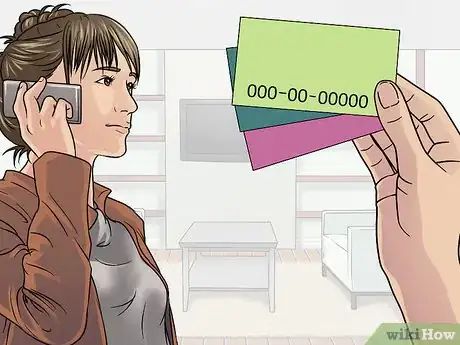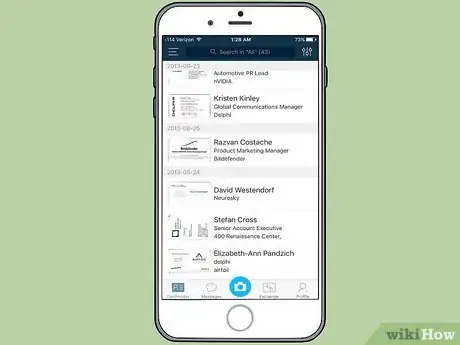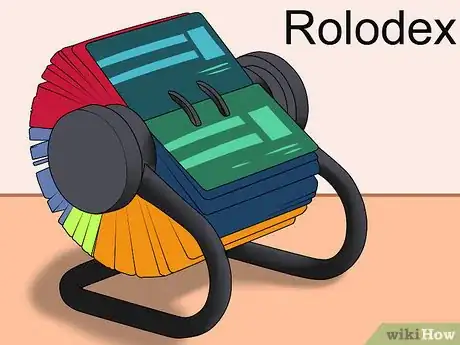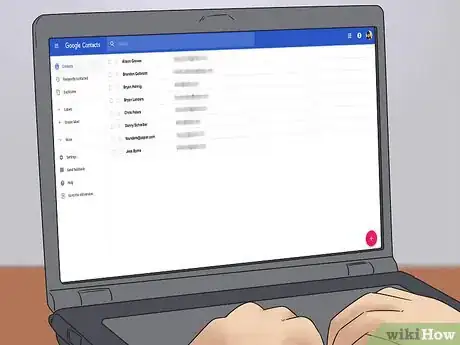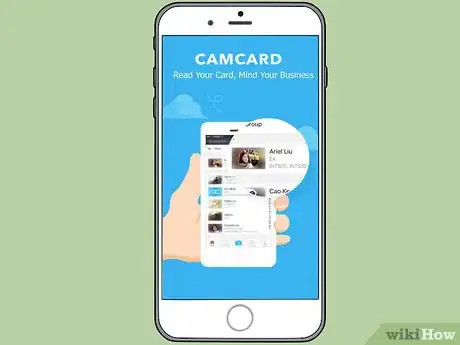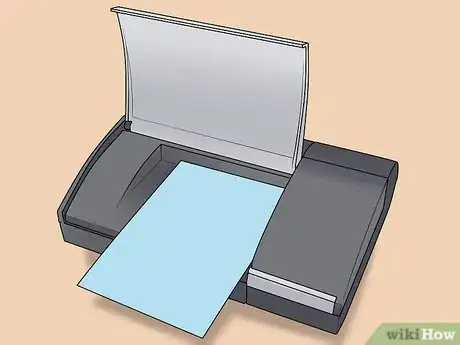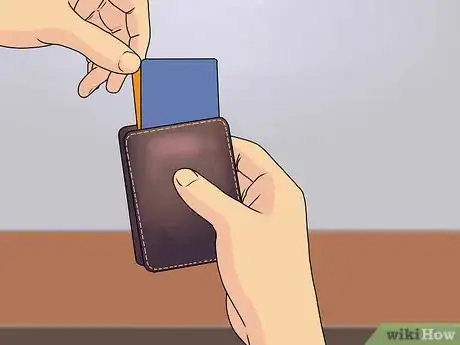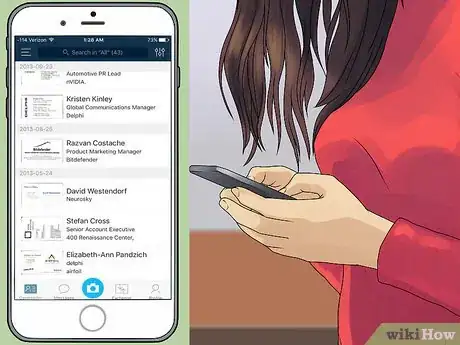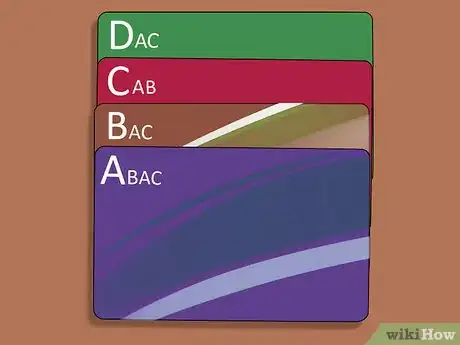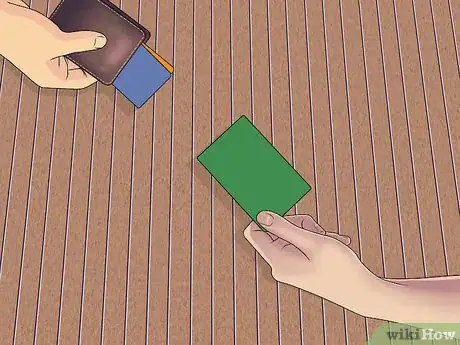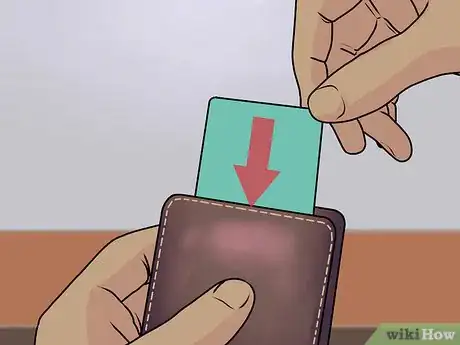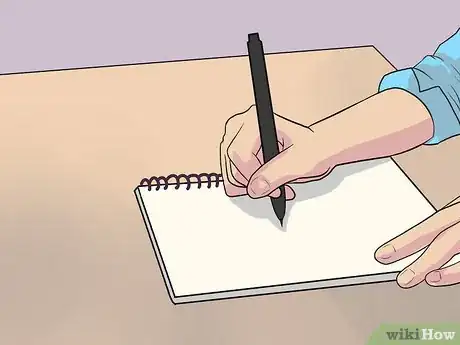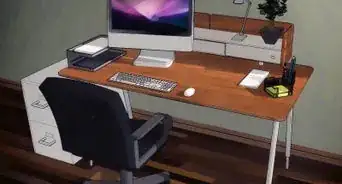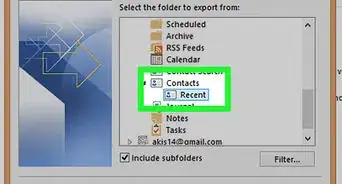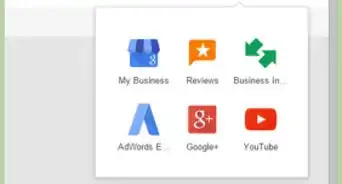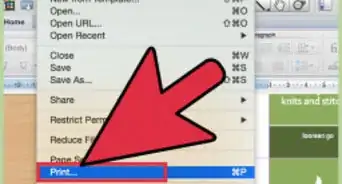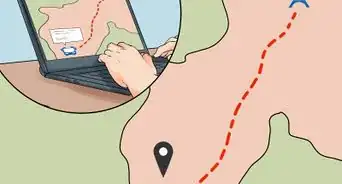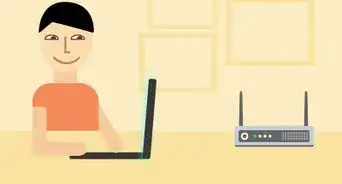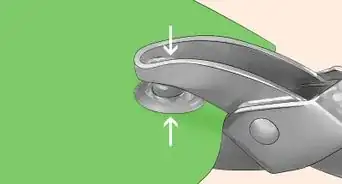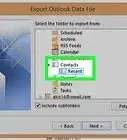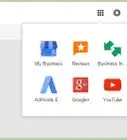This article was co-authored by Robert Rybarski. Robert Rybarski is an Organizational Specialist and Co-Owner of Conquering Clutter, a business that customizes closets, garages, and plantation shutters to ensure organized homes and lifestyles. Robert has over 23 years of consulting and sales experience in the organization industry. His business is based in Southern California.
There are 12 references cited in this article, which can be found at the bottom of the page.
wikiHow marks an article as reader-approved once it receives enough positive feedback. In this case, 100% of readers who voted found the article helpful, earning it our reader-approved status.
This article has been viewed 83,231 times.
Contact information is fundamental to networking and business communications. By organizing your business cards, you’ll be able to find people quicker, which can lead to more sales and long-term relationships. By writing down important information, keeping your cards safe in one place, and promptly uploading their information to your contacts, you'll be able to build your networks and connect to many people in your industry.
Steps
Putting Your Collection In Order
-
1Cull your existing collection. If you’ve been in business a long time already, you might have a sizable stash of business cards that need to get organized. Before you start organizing the ones you may still find useful, save time by going through your cards and disposing of all the ones that might not be useful anymore.[1]
- Get rid of business cards you don’t recognize. They won’t do you any good.
- Get rid of business cards that advertise defunct services or companies.
- Save really nostalgic cards (e.g. the card for the restaurant where you got engaged), but set them aside.
-
2Decide how you want the cards to be organized. You can simply put the cards in alphabetical order by name or company, if that seems most useful to you. You also might consider grouping them by event or industry, and then alphabetizing them within those parameters.[2] Experiment until you find a system that feels right for you, then stick to it.Advertisement
-
3Copy out a small collection. If you have just a few business cards and you don't want to digitize them, it’s possible to avoid using an app to organize them. Get all their information into one place by writing out their information into a reference place you’ll use.[3]
- If you like using a paper address book, you can transfer your cards’ information into that.
- You can also type the information straight into the Contacts feature on your computer.
-
4Store useful cards. Once you’ve made sure their information is easily accessible, it’s time to figure out what to do with the business cards. The “old-fashioned” habit of keeping useful cards, even if you just use a rubber band in your desk drawer, is a good backup for computerized information.[4]
- A Rolodex is easy to add and subtract cards from, and its rotating motion makes it easy to scan through cards. However, it is big and bulky, and may add an unintentionally retro look to your desk.
- A business card holder is attractive and compact, with individual clear sleeves to hold each business card. Avoid having to reorganize the whole thing every time you add a new card by leaving several empty slots in each alphabetical section.
- You can also use drawer dividers to help keep your business cards divided in your desk.[5]
Going Digital
-
1Make sure your digital contacts are on point. If you decide to import your business cards so they mesh seamlessly with your digital contacts, you’ll want to make sure that both pools are freshly organized and updated. Before uploading your business cards, take the opportunity to examine your existing contact list and remove any outdated ones.
- If you don’t have a way to organize your digital contacts yet, Google Contacts is often recommended, because it’s free, reliable, and works across a variety of operating systems.
-
2Pick an app. There are many apps available for tablets and smartphones that will scan a business card and automatically upload its information to your contacts.[6] You can’t use the app while in the middle of an event, obviously, but you can use it in your hotel room after you’re finished networking for the day. Here are a few popular options--they’re free or a few dollars at most:
-
3Consider a card scanner. If you find yourself sorting through dozens of business cards after every event, a separately-purchased business card scanner might make your life a bit faster. Card Scan is a popular option.[9] However, smartphone apps can do the same job, so if you’re not working with an intimidating volume of cards, this separate purchase might not be necessary.
-
4Upload cards and contacts promptly. When you return from a business lunch, trade show or meeting, immediately put the business cards you received in a safe and memorable place. When you have time, grab the business cards that have piled up in your desk drawer, and import them. Try to do this on a consistent schedule--once a day or week, for example.
-
5Take digital notes. Just like you write on a physical business card, you should be able to add additional notes in a business card app. Type out any information that wasn't on the card: what the card’s owner does, what information or prospects they offered, when you met them, and so on. Be detailed: you’re not doing this on the spot, so you can take your time.
- Copy your written notes out.
- If you’ve looked up the person since you met them, you can also expand with additional research.[10]
-
6Create a rating system. Organize your contacts further by reflecting on how often you expect to write to or work with them. Split them into groups: reliable business contacts, potential business contacts, and those that you’ll probably never talk to again.[11] Use a system you won’t forget so that you can categorize your contacts.
- Some apps include a feature where you can make notes like this.
- You could use a numbering system or a green, yellow and red stoplight system, depending on your app.
-
7Arrange the contacts appropriately. Depending on your card or contacts app, you will have a lot of choices about the ways you can organize contacts. (You will also probably be able to tag contacts to sort them into different groups, meaning you can organize their information in many different ways.) Here are some ideas on how to put contacts in order:
- Alphabetize by last name.
- Categorize by alphabetical order of name or company.
- City where you met.
- Category of industry.
Receiving Business Cards
-
1Have your own cards handy. In most cases, people don’t just hand each other business cards--they trade them. Facilitate a business card swap by keeping your own cards with you in professional settings like meetings and trade shows, but also in your everyday life. [12] You never know when you’re going to meet a new contact.
- If you’re having trouble keeping your cards neat, try designating a special pocket or folder for them. A rubber band also works, in a pinch.
- Never just hand over your card without asking--this can be seen as pushy.[13] Instead, say something like “I’d really like to talk to you more about what you do. Would you like to exchange cards?”
-
2Read the card when you receive it. Examining the business card for a second or two is a good way to make note of important information about a new contact. If you struggle with remembering names, use cards as a tool to connect names to faces. The person's title is usually printed on a business card, too. This is another clue about who they are and what they do.
-
3Have a place to put new business cards. If you carry a notebook or bag with you to meetings, designate a place in it for the business cards of new contacts. Or, use the second pocket on your own business card carrier to collect cards you receive.
- Don't stick cards in your notes, or stuff them in a pocket. They might easily go missing, or even go through the wash.
- If you’re traveling and expect to receive a lot of business cards, you can stash them in a Ziploc bag in your hotel or briefcase to keep them neat and dry.
- Make sure the place you put new business cards is not the place you keep your own cards. You don’t want to mix them up.
- Wherever you put the cards right now is not a permanent place--remember that you’ll be removing and organizing them later.
-
4Handwrite notes. Whenever you get a new business card, write down the name of the place where you met within a few days of meeting. This way, you won’t forget. Also, jot a brief note about what you talked about. Then when you contact the person later, you can remind them of the details of your conversation.
- If the card is glossy and you can’t write on it with a normal pen, try sticking a post-it to the card instead.
Warnings
- If you keep contacts on your computer, back up the files regularly. Automate this backup, if possible.⧼thumbs_response⧽
Things You’ll Need
- Your own business cards
- A business card folder or pocket
- A business card app
- A scanner
- Post-its
References
- ↑ http://unclutterer.com/2016/04/14/how-to-organize-business-cards/
- ↑ https://blog.evernote.com/blog/2014/01/14/how-to-eliminate-piles-of-business-cards-from-networking-events/
- ↑ http://www.goodhousekeeping.com/home/decorating-ideas/a23438/organizing-business-cards/
- ↑ https://unclutterer.com/2016/04/14/how-to-organize-business-cards/
- ↑ Robert Rybarski. Organizational Specialist. Expert Interview. 31 January 2020.
- ↑ http://www.macworld.com/article/3088655/ios-apps/5-apps-to-help-you-digitally-organize-business-cards.html
- ↑ https://www.camcard.com
- ↑ https://itunes.apple.com/us/app/scanbizcards-lite-business/id426260937?mt=8
- ↑ http://www.goodhousekeeping.com/home/decorating-ideas/a23438/organizing-business-cards/
- ↑ http://www.makeuseof.com/tag/scan-manage-business-cards/
- ↑ https://www.business2community.com/strategy/5-five-minute-tips-to-organize-contacts-in-your-network-01254374#V8cMkQcxmt3MCBdH.97
- ↑ http://www.greatfxprinting.com/articles/distribute-cards.htm
- ↑ http://money.usnews.com/money/careers/articles/2014/03/21/the-cardinal-rules-of-properly-using-business-cards
